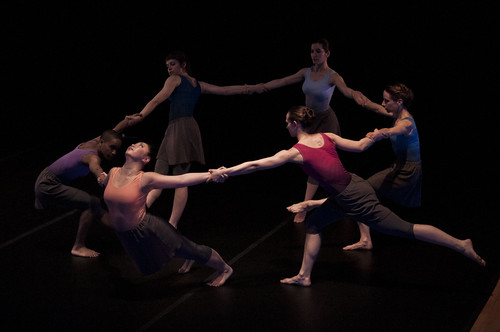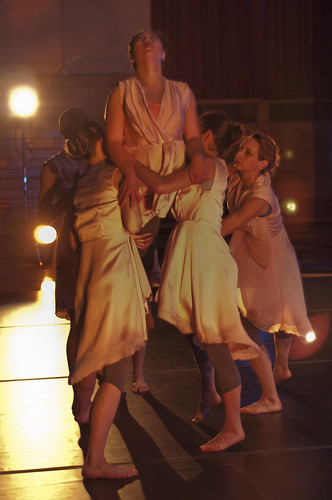A New Kind of Stargazing
- By Amber Straughn
- June 26, 2013
- 1 Comment
As both a scientist and a science communicator, I am always looking for opportunities to share the world of astronomy with audiences that might not spend their days thinking about how the universe works. When a friend of mine who is a dancer and choreographer mentioned to me that she was interested in doing a dance piece that centered around astronomy, I was thrilled to work with her. Angella Foster is the artistic director of alight dance theater, a non-profit professional dance company in Greenbelt, MD, just a few miles from Goddard, and we have been chatting about astronomy for the past couple of years. Her newest work, Stargazing, premieres this weekend in DC (read an essay written by Angella about this work). I have seen some excerpts of the work, but am really excited to see the whole piece in its entirety.

Credit: Maggie Picard Photography
People often think of sciences and the arts as being at opposite ends of the spectrum. I think that collaborations like this one prove otherwise. For me, one of the most fascinating things about astronomy is its universal (pun intended) appeal – everyone can appreciate the beauty of a night sky filled with stars, or of gorgeous Hubble images of nebulae and galaxies. Everyone can ponder the significance of what it means to be on a lone intelligent-life supporting planet in our Solar System, knowing that there are likely other planets out there with life, among the hundred billion other stars in a hundred billion other galaxies. Everyone can see the connected-ness of the universe when they realize that our very bodies – the bodies that dance, play, and learn – are made out of stuff that once existed at the center of a star. These concepts are awe-inspiring, and inform not only scientific inquiry, but also artistic forms of expression like dance.

Credit: Maggie Picard Photography
For this reason, I think that it’s important for us logic-focused, numbers-driven scientists to tap into the “other side” of things, the place where artistic creativity and expression live. Many already do. Being able to step back from our day-to-day jobs of working with data, writing code and papers, building spacecraft, and other scientist-y things allows us to see the bigger picture. It allows us to see astronomy from a different vantage point, investigated and expressed through a different medium that technical papers. It’s always good when our horizons become bigger.
You can follow Amber on Twitter at @astraughnomer.



I love this type of cross-pollination; I was lucky to be part of one too http://doctorcinnamon.com/2013/02/16/gravity-the-dance-of-space-and-time/